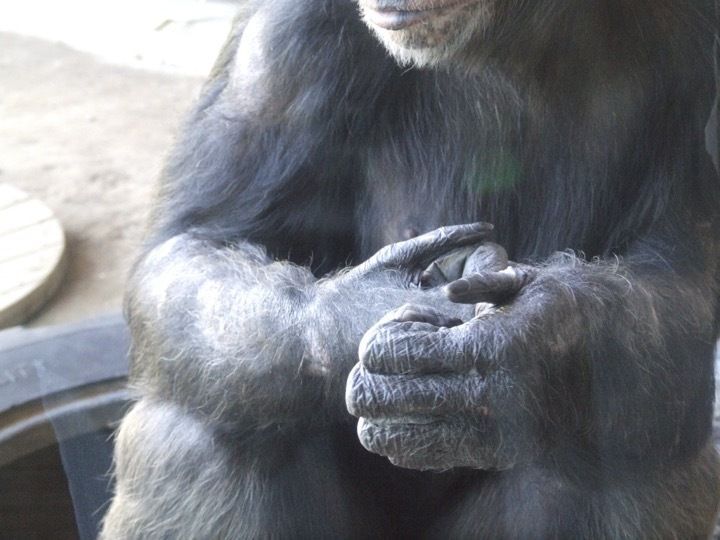
This week there were two studies in the news in regard to language. One study explored chimpanzee speech capacities. It examined two video segments of chimpanzees saying the word “mama”. Those of you who are familiar with sign language studies in chimpanzees, know that in the 1950’s Keith and Cathy Hayes taught a young chimpanzee Viki to talk. She learned four words in about so many years. More recently a researcher analyzed that video using a linguistic analysis of sounds from Viki. This week a new analysis includes two chimpanzees Johnny and Renata who say the word “mama”. The researchers analyzed these videos for speech patterns in the sounds the chimpanzees produced. (Warning, the second video is disturbing as it includes a chimpanzee kept in deprived and inappropriate conditions). Human subjects listened to the recordings and could not discern the difference between human and chimpanzee speech.
These studies are fascinating. Humans have for centuries wondered if chimpanzees could talk. But chimpanzees always fall short, they don’t have the same neural wiring that has evolved in our species that allows speech. But speech is far more than the production of phonetic sounds, it is laid into the bedrock of conversation, face to face embodied interactions that include facial expressions, body postures, gestures, turn taking, attunement, and adjustment. So often studies of language fail to consider the full spectrum of behaviors involved in languaging.
Another study this week examined the timing of gestural exchanges in wild chimpanzees. This study showed that the timing of turns in exchanges is similar to that of human conversations. This supports decades of research with signing chimpanzees.
The research with signing chimpanzees Washoe, Moja, Tatu, Dar and Loulis shows they
- initiate conversations in ways that consider the attentional state of the partner (Bodamer & Gardner).
- take turns in signed conversations (Hartmann)
- repair misunderstandings (Leitten et al; Jensvold & Gardner)
- ask questions using markers that accompany signs as do humans signers (Dombrausky et al).
- Their utterances function in a variety of ways beyond initiating and asking questions. They make statements and respond to partners (Leeds & Jensvold).
When we consider that human language is a social behavior, seated in a long evolutionary suite of behaviors that function to facilitate this, it should be no surprise that chimpanzees share so many behaviors that are part of language.
To learn more about the sign language studies with chimpanzees visit www.friendsofwashoe.org.




